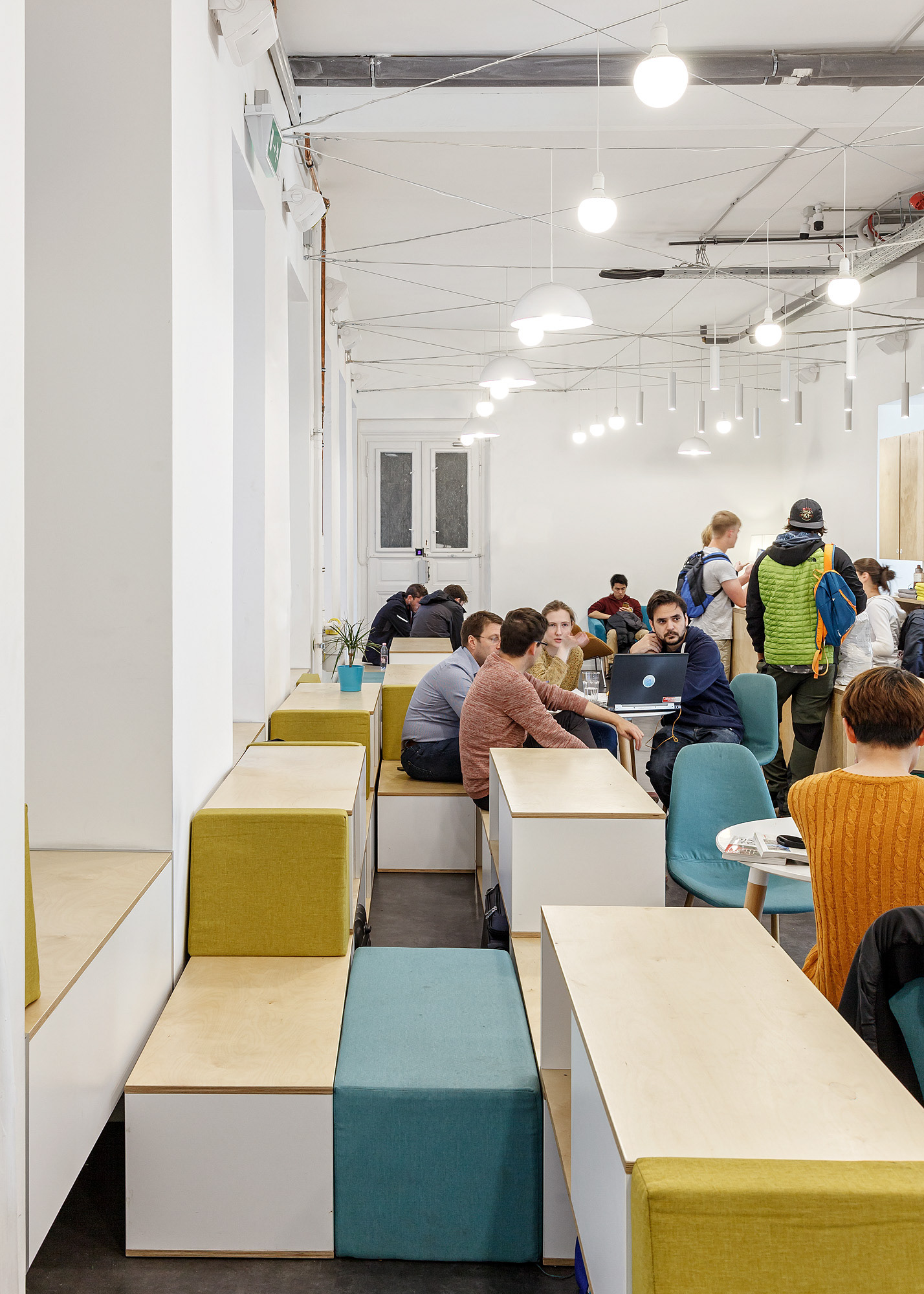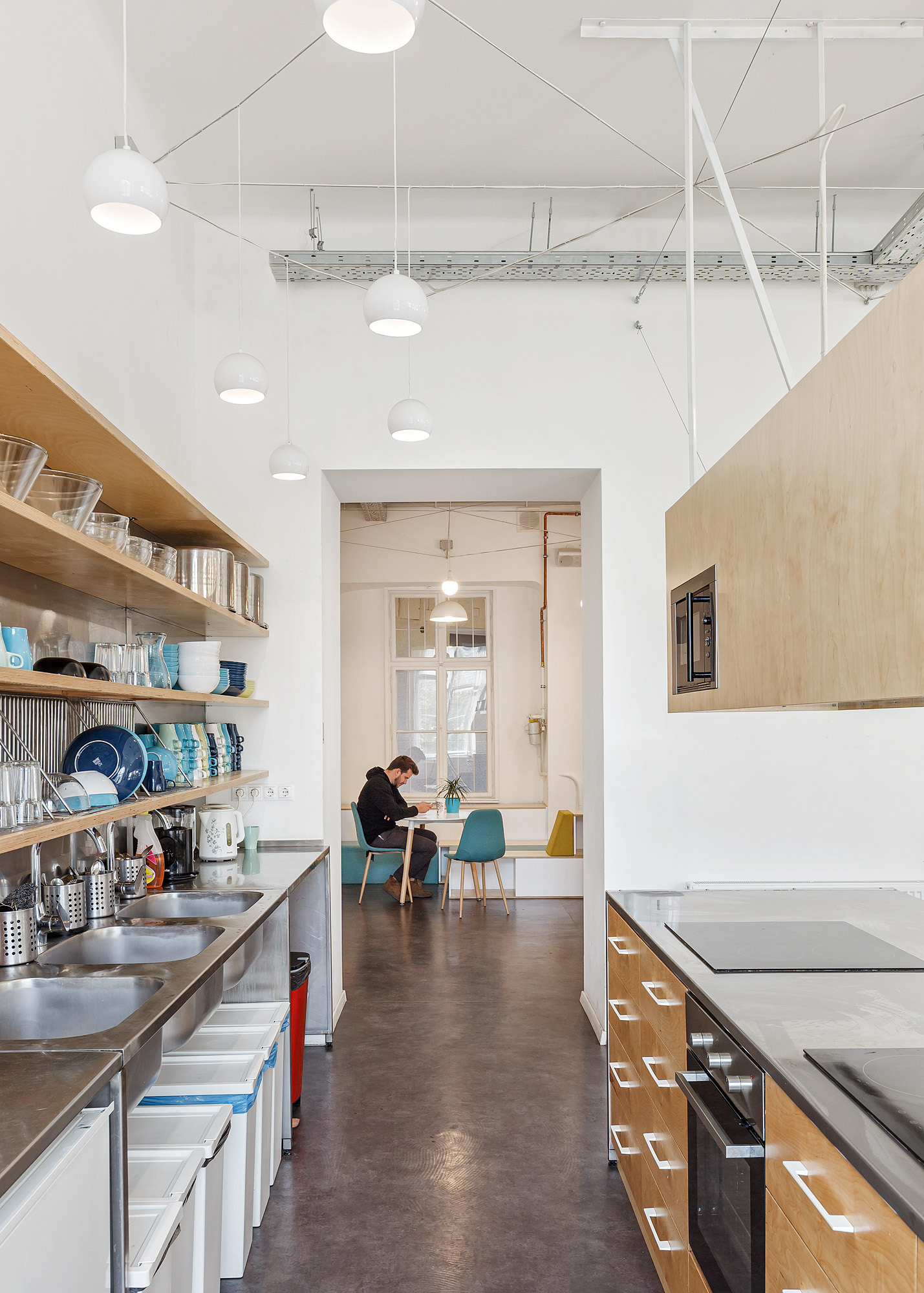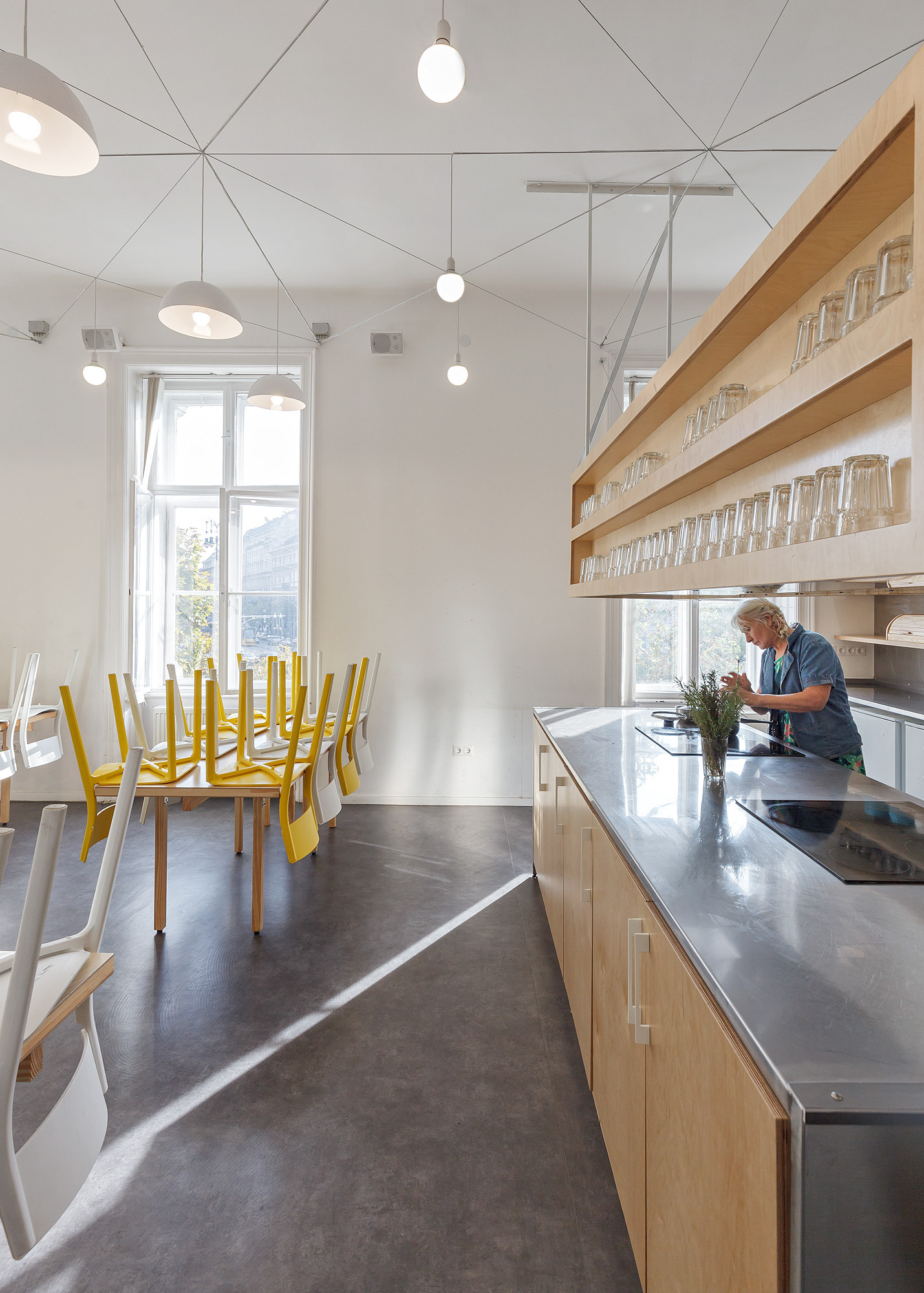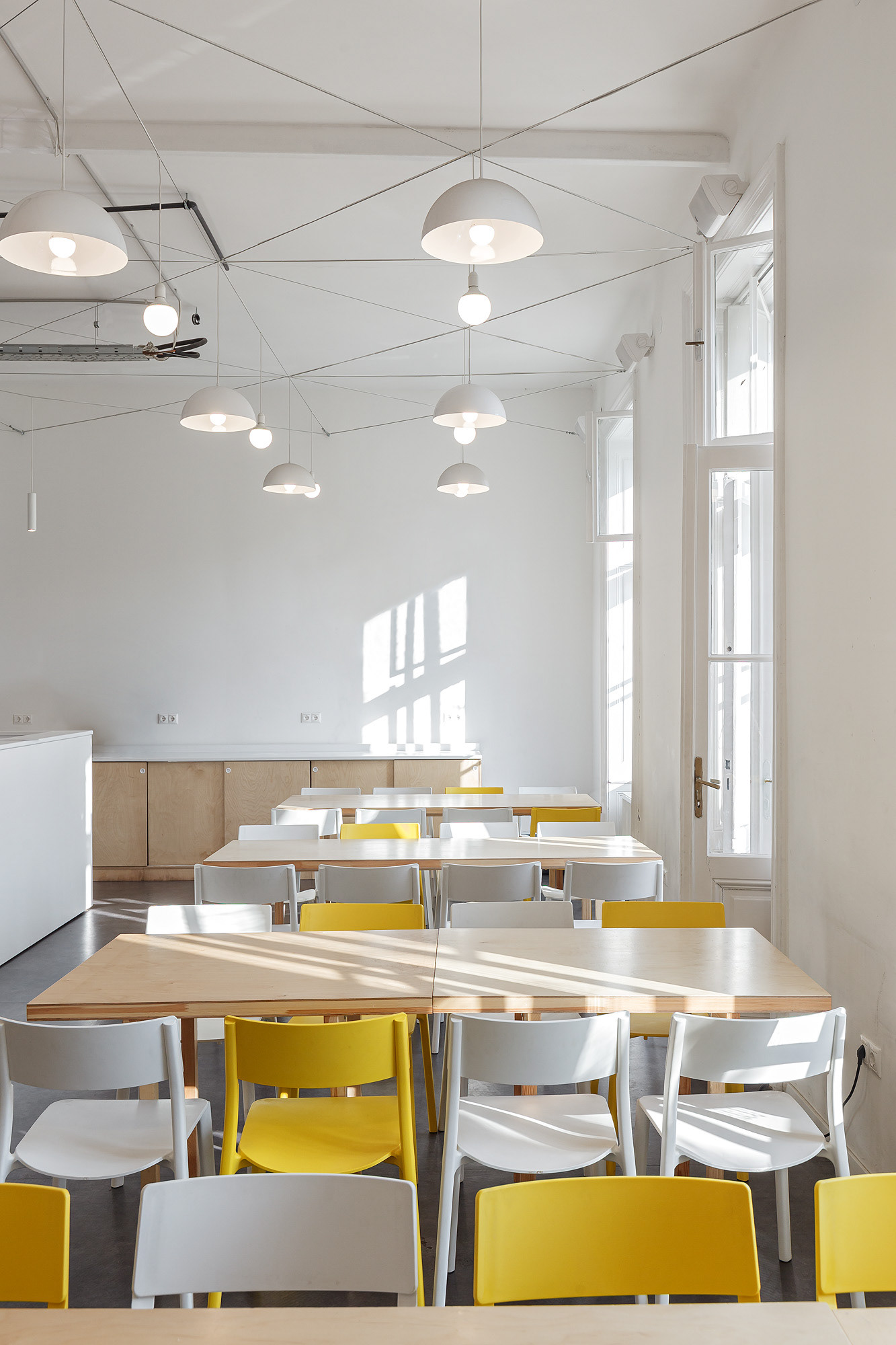Avenue Hostel
Program: extension of an existing hostel
In 2017 it became necessary to expand Avenue Hostel located in a historic apartment building, with new community spaces due to the increased number of guests. In order to solve the problem, the management got into the possession of some neighboring real-estates with the aim to join them to the original three storey hostel. A reception area, a lounge, a community kitchen with canteen, a bar, and some new dormitories were planned to be placed into the newly occupied spaces.
Challenge: how to utilize ‘spatial reserve’ of historic apartment buildings?
During the design process the main challenge was the transformation of a historic apartment building with a layout structure fragmented during the XXth century into a place with generous, spatious areas that can serve the public functions of a community lodging with a guest capacity of more than 150. We were looking for means of how to utilize the “spatial reserve” of these real-estates originally built as apartments, in the formation of intensively used community spaces.
Project: building spatious areas and flexible furniture to adapt to changing use
Downtown apartment buildings erected during the turn of the XIXth into the XXth century provide many opportunities for various functions and uses to be established. A loadbeading wall in the middle divides the floorplan into two tracts: one facing Oktogon square and another facing the inner courtyard. In addition to this, it is only the uniform order of openings on the facades that influence the transformability of interior spaces. The inner height of 4m makes it possible to create long spaces without disturbingly compressed proportions. On the first floor we designed two representative spaces with the removal of several partition walls: a canteen with a bar and community kitchen were designated at the tract facing Oktogon square, while the reception and the lounge were placed into the other one. Openings in the loadbearing wall at the middle ensure connection between the two sides in order to make guests experience a space with a floor area of 150m2 when they enter into the hostel. We wanted to expand the dimensions of this area vertically as well, so we installed the lighting system onto a spanned steel wire mesh, above which mechanical cables remained visible. This intervention enables simple and unrestricted transformability of the electric system, while gives uniform character to the space. The floor is covered with grey linoleum that can withstand loads brought about by various types of uses. As a result functions can be rearranged without replacing the floor cover. So surfaces at the top and the ground are designed in a way to foster adaptation to physical and functional changes. Enabling simple transformability and free, diverse usability were the main principles during the design of the community furniture as well. Furniture placed into the lounge consists of modular elements without predefined function, so it constantly changes which parts operate as sitting-, lying- or storage areas: guests give content to the furniture temporarily during their momentary activities. We designed the dining tables to be lightweight in spite of their big size, so the space can be rearranged rapidly that makes it easy to organize versatile community events.








